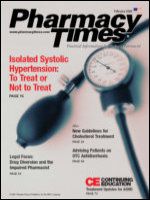Publication
Article
Pharmacy Times
Novel Erythropoiesis Stimulating Protein (Darbepoetin, Aranesp)
Author(s):
IntroductionAnemia of chronic renal diseases in dialysis patients and patients receiving antineoplastic therapy are common problems in medical practice. Approximately 500,000 patients in the United States are suffering from end-stage renal disease, and close to 80% of these patients require erythropoietin therapy. Anemia in chronic renal failure may be associated with decreased red blood cell production, a decrease in red blood cell survival, and increased blood loss in the extracorporeal circuit. In the past decade, human erythropoietin-alpha (r-HuEPO) has been the drug of choice for the treatment of anemia in patients with renal failure and nonmyeloid malignancies. Novel erythropoiesis stimulating protein (NESP, darbepoetin, Amgen, Thousand Oaks, CA) is a new formulation of erythropoietin with significant pharmacokinetic advantages over the standard r-HuEPO. Approval for marketing NESP in the United States was granted by the FDA in late 2001.
Pharmacology
Inadequate tissue oxygenation and low oxygen tension in the blood may activate production and release of endogenous erythropoietin. NESP is a glycosylated r-HuEPO with a threefold longer half-life. Two extra carbohydrate chains were substituted in r-HuEPO to increase the molecular weight, which ultimately led to superior activity and a longer half-life. Like r-HuEPO, NESP binds to erythropoietin receptors on erythroid progenitor cells and enhances proliferation and activation of these cells into mature red blood cells. R-HuEPO requires multiple weekly doses; NESP can be administered once weekly or biweekly and adjusted for hemoglobin of 11 to 12 g/dL or hematocrit of 33% to 36%. While NESP has been approved by the FDA for the treatment of anemia of chronic renal failure, several studies have documented the efficacy of NESP for the treatment of anemia associated with chemotherapy in nonmyeloid malignancies. (1,2)
Clinical Studies
In one study, 122 dialysis patients were randomized to NESP 0.45 mcg/kg every week or 50 U/kg r-HuEPO 50 U/kg three times a week for 30 weeks. The target hemoglobin was 11 g/dL. Although a 40% lower dose of NESP was used compared to r-HuEPO, there was only a 2-week difference between the two groups in the median time to reach target hemoglobin. In another study, 703 patients were switched from r-HuEPO to an equivalent peptide mass of NESP (200 U is equivalent to 1 mcg of NESP). No significant changes in hemoglobin or hematocrit were noted after conversion. In this study, 89% of patients were able to reach target hemoglobin with an every-other-week administration. Use of NESP in this setting may potentially benefit patients and the health care system due to reduced frequency of dosing administration. In phase 1/2 studies of efficacy and tolerability of NESP in solid tumor patients, 177 patients with gynecologic, breast, lung, or gastrointestinal tumors received NESP. At 12 weeks, 85% of patients reached target hemoglobin levels. NESP was well tolerated without any significant increased adverse reactions compared to other patients with solid tumor malignancies. (2,3)
SafetyNESP, like r-HuEPO, was well tolerated in clinical trials. The overall incidence of hypertension and clotting disorders was the same when compared to r-HuEPO. No evidence of drug accumulation or antibodies formation has been documented in more than 1,500 patients.
OutlookNESP is a glycosylated protein of r-HuEPO with significantly better phar-macokinetic properties and pharmaco-dynamic activities in patients with renal failure and nonmyeloid malignancies. Most patients required once-weekly or biweekly administration, which ultimately benefits both patients and the health care system.
For a list of references, send a stamped, self-addressed envelope to: References Department, Pharmacy Times, 1065 Old Country Road, Suite 213, Westbury, NY 11590; or send an e-mail request to: [email protected]
Newsletter
Stay informed on drug updates, treatment guidelines, and pharmacy practice trends—subscribe to Pharmacy Times for weekly clinical insights.







